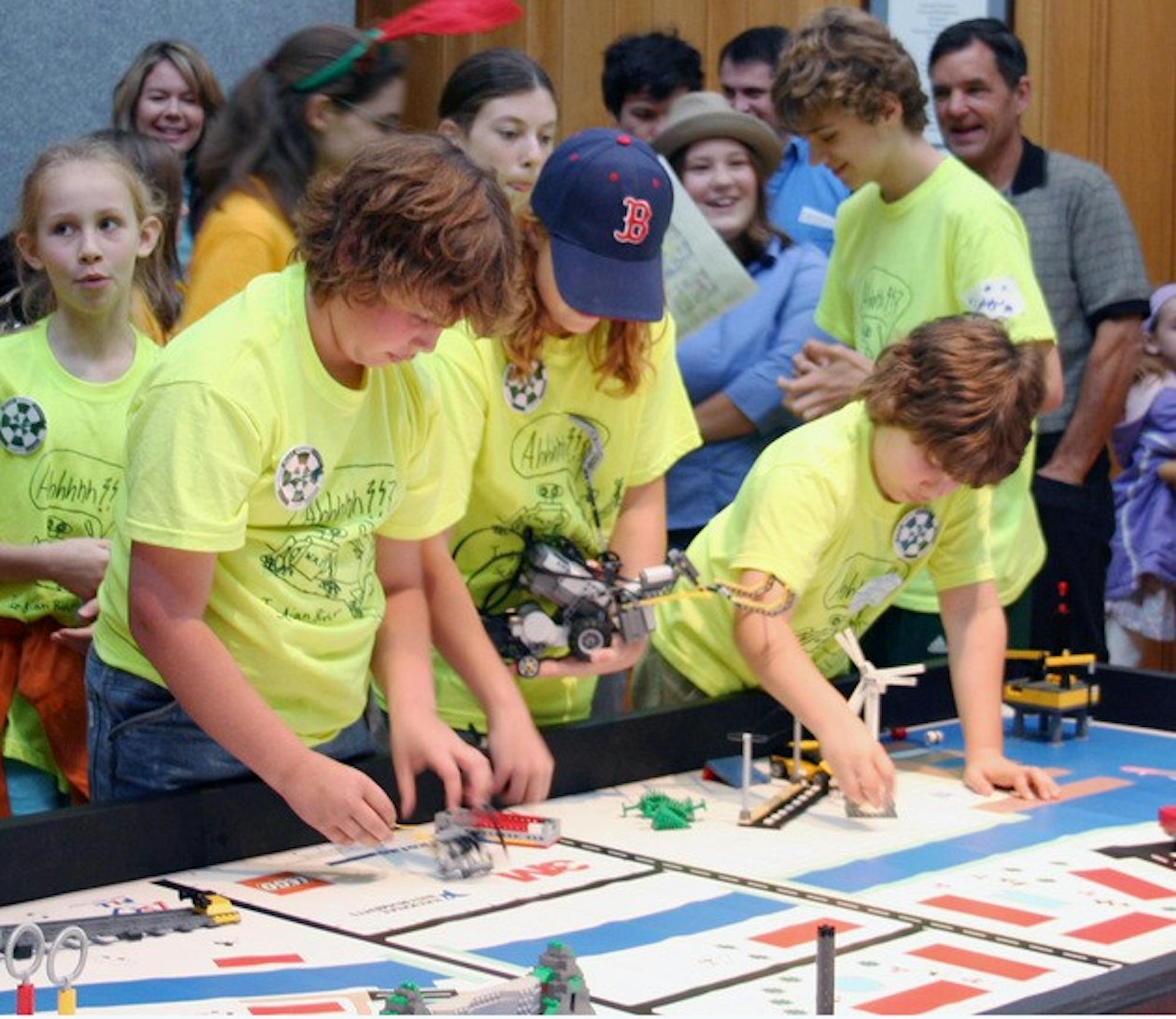Amidst a clash of titans Saturday, one rose above the rest: Team Waffles' Lego robot. The robot, constructed exclusively from Legos, was one of the participants competing in the Dartmouth Area Robotics Tournament, hosted by the Thayer School of Engineering in Cummings Hall.
The tournament brought 16 teams of middle school students, all members of the FIRST Lego League of the Upper Valley, together to pit their Lego Mindstorms robot creations against one another. FIRST -- that's "For Inspiration and Recognition of Science and Technology" -- sponsors Lego League tournaments in locations around the world with the goal of teaching children the value of teamwork.
"The overriding theme is gracious professionalism," Beccy Jensen, a coach of the Peacham, Vt. Library team said.
Each team had two-and-a-half minutes to complete as many "missions" as possible. The competition included 14 symbolic missions, each of which was allocated a certain number of points, and all of which were aimed at teaching the participating children the benefits of alternative energy. A popular mission required teams to place a hydropower dam over a river and set up a power grid to convey electricity to the town. Other missions included placing solar panels on a house, planting trees and drilling for oil -- with requisite penalties for any barrels touching water or property.
At the end of the day, Team Waffles, which accrued the most total points, emerged victorious.
Amidst the fun of Saturday's competition lay a more serious, educational note. In order to fulfill FIRST requirements, teams had to perform a research project before participating in the competition. Each team audited a local building's energy usage, analyzed potential alternative sources of energy and then talked with experts in the appropriate fields.
During the competition, several vendors had small tables set up in Thayer's main hall to advertise their products. SimpleEnergy, whose motto is "Friendly Hometown Heating Oil," displayed their BioHeat oil, a combination of 20-percent soybean-derived biodiesel and 80 percent conventional oil. GroSolar had a portion of one of their solar panels on display.
"You guys are looking at your future in just a few years," Dave Hopabank, an organizer of the event, told the gathered children.
His statement need not apply just to alternative energy; it can apply equally to the field of robotics. There are striking parallels between "real" robots and the devices built with Lego's Mindstorms robotics kits. Construction of a Lego robot begins with a computer that serves as the brains of the robot. Robots can be built from just about any piece from the Lego catalog, with special help from instrumentation taken from the world of robotics -- servo motors, as well as touch, ultrasonic, light and sound sensors. Programming of the robot is done through a drag and drop interface that teaches the basics of coding without the necessity of wading through difficult-to-remember syntaxes, Jensen said.
The tournament encouraged the student to think like resourceful engineers: during a presentation of the Upper Valley FIRST high school robotics team, a student mentioned that duct tape was not allowed in the high school competition. A unanimous outcry of "what?" emerged from the assembled middle school students.




